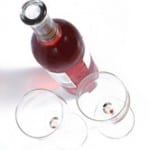 “With the COVID-19 virus, we have been talking about how important it is to make sure your branding is aligned. So we went back to this blog piece we wrote a few years ago. Not sure if your region needs a brand, here is the evidence”
“With the COVID-19 virus, we have been talking about how important it is to make sure your branding is aligned. So we went back to this blog piece we wrote a few years ago. Not sure if your region needs a brand, here is the evidence”
One of the most common discussions I hear in tourism (at the small business end) is around the role of branding. There often seems to be an assumption that virtue will be rewarded – if you are good enough you don’t need to boast about it.
It vaguely reminds me of Juliet’s lament in Shakespeare’s play when she bemoans Romeo’s name (being from the rival gang in the Verona ‘hood) observing that ‘a rose by any other name would smell as sweet’.
Over years of working with brands, I have come to the conclusion that Juliet was wrong. A rose would NOT smell as sweet if it wasn’t called a rose. The reason is that smell is an intangible thing – we know that it is nice or nasty, but until we build some identity around it we don’t know how to describe it.
Over the years at conferences I have cited many examples of this. One I use often is the car that an American and Japanese manufacturer agreed to build and market jointly. The cars were built in the same factories but were marketed under two different brands – one Japanese and one American. The cars themselves were identical (the rose did in reality smell as sweet), but the Japanese manufacturer could command a premium of close to 10,000 dollars – a premium of nearly 30%. I can’t think of anyone who wouldn’t welcome that kind of ability to charge. That premium reflected the reputation of the Japanese for reliable cars and the investment in that attribute of the brand. So the reputation of the smell of the American rose was not as sweet…
But although people nod sagely at conferences, I think many small businesses struggle to connect that to their daily business lives. So I thought I would use a more direct example from my own experience to demonstrate the power that a brand can bring to regional tourism businesses: The Prosecco Road.
If you don’t know it, the Prosecco Road is located in North-Eastern Victoria – just over the border from New South Wales. It connects the wineries of the King Valley and the Milawa Gourmet Region. The area was settled by Italians and they brought the native grape varieties of their home regions. Grapes like arneis, barbera and sangiovese – many of which suit Australia’s climate and make very food-friendly wines.
We have tasted and enjoyed these wines at wine shows over many years and have long spoken of visiting the region. But somehow, somehow we never got round to it.
Then last year we read an account in the press of the Prosecco Road – and we just returned from a visit.
Now I don’t want to overstate this, because we didn’t just go there because of the name. We knew the region had interesting wine varieties and we planned to go ‘someday’. But I definitely believe that the branding helped drive the conversion of that future intention into a definite visit. Why was that?
In part, I think the branding made the experience feel more tangible. If you haven’t visited a wine region before you don’t know how many cellar doors will be open and what to expect. But the Prosecco Road made a definite commitment. There would be enough experiences available to justify a road after all. This isn’t as counter-intuitive as it sounds. A few years ago we investigated another region known for its fine wines but that research revealed that wine tasting really had to be an adjunct experience rather than the main purpose of visit. Many of the wineries did not have cellar doors or operate by appointment only. We visited a few very fine wineries there – but not enough to justify a visit on its own. After that experience, we really look for that reassurance on the amount there is to do. If you are going to do a long drive from Sydney or pay for a regional flight, you need to know that there will be enough to do. I can’t count how many times I have heard that perception that there is nothing to do given as a reason why Australians don’t travel more in their own country.
The branding also gave an expectation of the product – clearly demonstrating the Italian heritage of the region. This heritage allowed it to hang other products and experiences off the back of it, like cooking classes at Pizzini winery or salami making at Politini, produce that linked to Italian heritage and restaurants with those themes in their food.
The road branding also gave a shape to the experience, what the French in their museums call a ‘sens de la visite’.
And it argued that here was a region that had thought about what might interest potential visitors and tried to deliver it. I felt that my trip would be appreciated as well as rewarding for me.
All of these lowered the perceived effort in planning to a point where it went below the ‘too hard’ threshold. When we read the article, it made us stop talking about it and start doing it. I reckon it could have brought our trip forward by a year or more. Again, I reckon that any region would be happy to bring that sense of urgency into plans to visit.
So that is why I say that the Prosecco Road does smell sweeter…..
[icon name=”fighter-jet” class=””] Do you want to hear more from us?
Want to be kept up to date with the latest travel and tourism insights? Join Our Mailing List. Every 2 weeks, we send the latest practical insight for you to apply to your business and destination marketing.




Leave a Reply